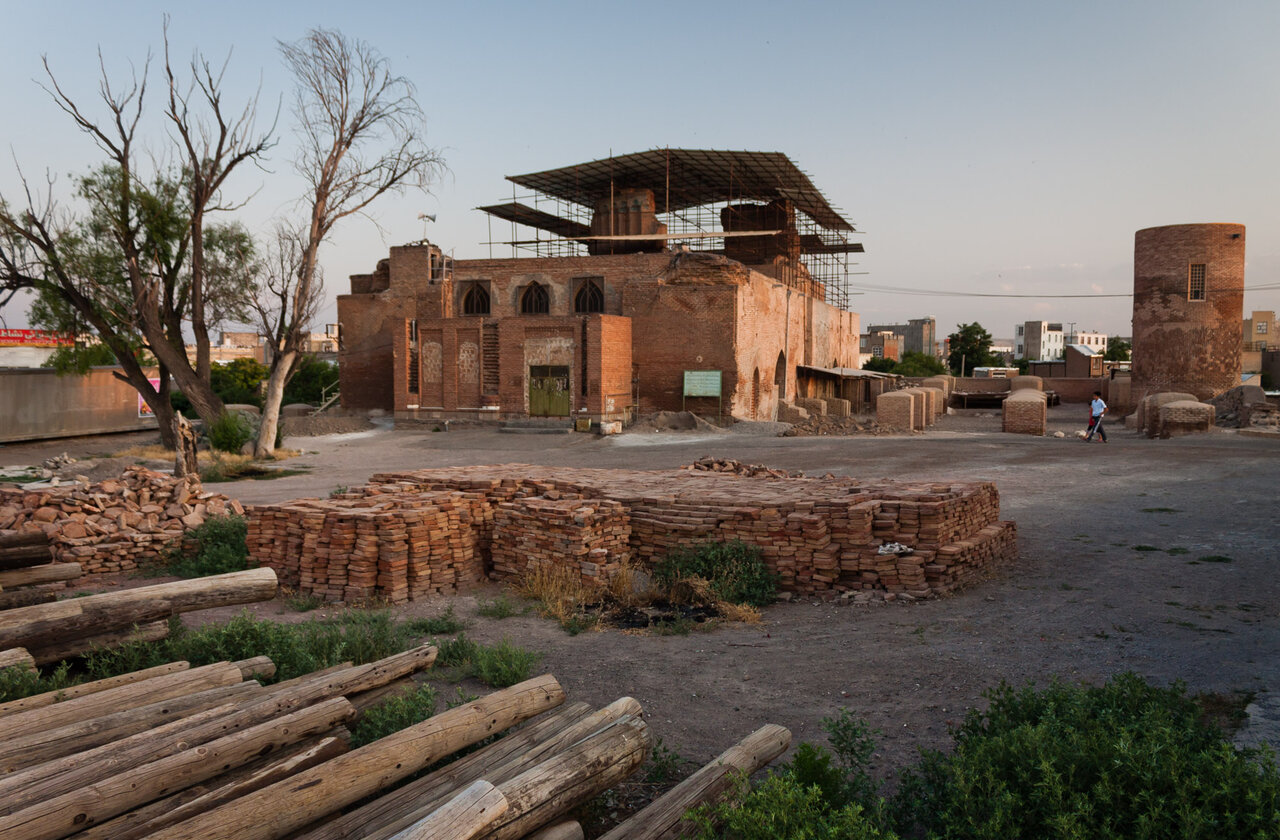Discover Ardabil Great Mosque as tourism magnet

TEHRAN – Located in northwest Iran, the Ardabil Great Mosque, also known as Masjed Jameh in some sources, stands as the sole surviving segment of a grand complex constructed over various historical periods.
The zenith of its development is notably attributed to the Seljuk era, although its origins trace back to pre-Islamic times when it functioned as a fire temple under the Parthian Empire, according to Visit Iran.
Regrettably, the Mongol invasion resulted in the devastation of sections of the yard, the majestic dome, and its iwan. Only fragments of this once-splendid complex endure as a testament to the past, featuring the dome and iwan of the great mosque. Notably, the brick cylinder minaret echoes the architectural style of the Seljuk era.
Despite the Ardabil Great Mosque predating the Seljuk epoch, its design diverges from the prevalent four-iwan layout of that era. Beneath the dome, meticulously planned corridors and vestibules facilitated the congregation during religious events. Serving as intersections, these corridors, each approximately two meters long, remain as an enduring architectural legacy.
The primary area of the mosque adopts a square configuration embellished with Ghatarbandi stucco and mosaic faience in each hall corner. Squinches adorned with sizable motifs occupy the corners, featuring rectangular openings that introduce natural light, enhancing the altar’s luminosity.
The allure of the structure extends to the wooden panels of the beam ceiling, spanning fifteen meters and supported by nine wooden logs atop stone pillars. At the entrance, distinguished by embossed metallic decorations, a tablet crowns the ensemble.
Adjacent to the main structure is an ancient mosque comprising a single dome and four rooms, constructed primarily from bricks with limited tile embellishments. The dome’s east and west facets boast three arches each, leading to narrow pathways and distinct spaces such as the chapel and prayer hall. An additional iwan, utilized by the local community, connects to the altar on the south and underground passageways on the west and east sides.
For enthusiasts of ancient architecture, a visit to the Ardabil Great Mosque is highly recommended to explore its rich architectural remains.
The terms “Jameh Mosque”, “Masjed-e Jameh” and “Friday Mosque” are used in Iran for a grand communal mosque where mandatory Friday prayers are performed: the phrase is used in other Muslim countries but only in Iran does it designate this purpose.
AFM
